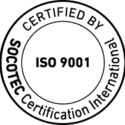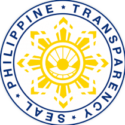
The third biggest province in the whole Philippine Archipelago, derived its name from salt or “asin” in the vernacular. Owing to the rich and fine salt beds which were the prime source of livelihood for the province’s coastal towns, PanagASINan or “Pangasinan” which means “where salt is made” came to be its name.
The province is crescent-shaped and occupies 536,818 hectares of land area which constitutes almost one-half (41.8%) of the total land area of Region 1 and 1.8% of the total area of the Philippines. Composed of 4 cities and 44 municipalities, it is bounded on the north by the Lingayen Gulf, La Union and Benguet, on the north-east by Nueva Vizcaya, on the east by Nueva Ecija, on the south by Tarlac, and on the west by Zambales and the China Sea.
Owing to its diverse cultural heritage rooted in centuries of glorious history and a way of life that is a delightful combination of tradition, innovation and creativity, the warm, polite, hospitable, hard-working and fun loving 2.65 million Pangasinenses (2007 census) enjoy the best of Provincial Philippines where you find both the familiar and unfamiliar world, abreast with modern technological times, but with a preserved vast panorama of outstanding natural beauty and unique attractions.
Pangasinan boasts of stretches of white, sandy beaches, verdant hills, scenic terrains, caves, waterfalls, ancient Hispanic churches, miraculous destinations for devotees, a vast coastline for fishing, water sports or leisurely walking along the Lingayen beach where one can get a glimpse of the world-famous Philippine sunset.
Being a gateway of sorts, the province is house to major and minor telecommunication companies, bus and transport services, regional and local publications, radio stations, television networks , cable services, hotel and restaurant chains, and a diversified variety of manufacturing and merchandising establishments.
The Northern Gate
Pangasinan is a crescent-shaped province that occupies 5,368.82 square kilometers of verdant farmlands, hills, forests and rivers. To the east, it is bounded by the mighty Cordillera Mountains, the Zambales ranges to the west, the rice plains of Tarlac to the south and the Lingayen Gulf and the China Sea to the north. Because of this strategic geographical positioning, it has always been described as a gateway of sorts. Most travellers going up North often remember Pangasinan as the place where they had last seen some semblance of civilization, comparing it with the sparsely populated regions of the Ilocos and the Cagayan Valley (with the exception of Baguio and the old Spanish towns of Vigan and Laoag).
Connections
Historian Rosario Mendoza Cortes writes in her book, Pangasinan 1572-1800 that according to Bishop Domingo de Salazar, Pangasinan “was forty leagues distant from Manila either by land or by sea.” Roughly translated, travelers of old normally take about thirty-hours to reach Manila via horse and carriage. After the eruption of Mount Pinatubo, travel time was normally 5 to 7 hours as normal route points like Bamban and Mabalacat were closed temporarily. Today, 5 hours is the norm although private vehicles can sometimes negotiate the route under 4 hours. Most major bus companies ply the Manila-Pangasinan route complemented by a host of local bus lines, which can be hired for private purposes and tours. Most bus services operate on a 24-hour basis. Media services are active in Pangasinan. National dailies as well as local publications (several weeklies and one daily) are available. There are 20 radio stations and one regional television station. Cable services have mushroomed even in areas far from the urbanized centers of Dagupan, Urdaneta and Alaminos. At the latest survey, Pangasinan has the highest tele-density in the country outside of Metro Manila with the presence of three major telecommunication companies.
People and Culture
Much has been written and discussed about the Pangasinense, yet no definite image comes to mind. There is a strong perception that the province is basically of Ilocano stock, but aside from the fact that Iloko is more widely spoken than “Pangasinan”, the defining characteristics end there. The Pangasinense is hardly frugal in the true sense of the word, nor is he extravagant either. Special occasions such as fiestas, weddings and baptisms are exceptions wherein extravagance is necessary to “save face”, but then most other Filipinos in other regions are similar in that respect. History tells us however that the Pangasinense has always been sensitive to issues concerning his welfare. One of the first local revolts during the Spanish colonization was instigated by a Binalatongan native, (now San Carlos) Andres Malong in 1660.
The Gifts of the Earth and Sea
Pangasinan is rooted to the earth – agriculture based production remains as a major source of income for the majority of the populace. Aqua-culture is also popular in areas where instead of farmlands, variated squares of artificial ponds for fish rearing are found. Through the years, as the demand for particular fish stocks rose and fell, fishpond owners have adapted by sticking to traditionally favored, and stable growing fish species like the bangus or milkfish, the malaga and prawns. With agriculture currently mobilizing more than half of the local labor force, the current administration has seen the need to boost its efforts in this area.
El Niño and La Niña
Like the rest of the country and the world, 1998 was Pangasinan’s hottest year with temperatures soaring beyond the 40’s. The lingering effects of the El Nino and the La Nina phenomenon continue to affect the local climate. Normally, the dry season begins in November to April and wet during the rest of the year. Typhoons intermittently wreak havoc with some serious flooding in the eastern towns. However, the presence of a long coastline with attractive beaches offsets the hot and humid weather; sun-loving tourists affirm that Pangasinan’s current climate is perfect.
The Count
Current census (Year 2000) figures place the population at 2,434,086 distributed in the province’s 44 towns, four cities and 1,364 barangays. English and Filipino are widely spoken and are the mediums of instruction in all schools. Ilocano is the major dialect, spoken by a greater portion of the population in the western and eastern areas. There is some fear that the Pangasinan dialect, spoken predominantly in the central areas, is losing its hold on the local tongue. Bolinao, at the northernmost tip of western Pangasinan has a unique language of its own, also called Bolinao.







 Philippine Government
Philippine Government Department of Education
Department of Education Department of Tourism
Department of Tourism Civil Service
Civil Service PAGASA
PAGASA